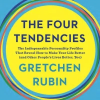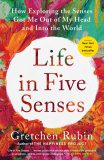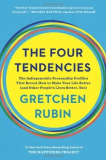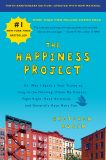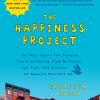Happier with Gretchen Rubin
Little: The Idea of “Negative Space” and the Wizarding World of Harry Potter


An idea that interests me more and more is the notion of “negative space.” This is a term that comes up often in the study of art, and it took me a long time to understand what the term means—even though it means exactly that, negative space.
Negative space is the space that surrounds a primary object or objects in an image. If you see a picture of a vase, the negative space is the space around the vase.
More and more, I’ve started to understand the importance of really seeing negative space—and really appreciating its importance. While it’s easy to overlook the negative space, because I’m focusing on the vase or whatever, I shouldn’t dismiss it.
And I also think about “negative space” metaphorically—the parts that go overlooked, that seem incidental or subsidiary, what we ignore because it seems separate (or lesser) from the main event.
For instance, when I go to museums, I often think: why don’t they do something interesting in the restrooms, or in the elevator, in the stairwells? It’s not the “real” space of the museum, so it gets overlooked.
My daughter Eleanor and I just went to the Wizarding World of Harry Potter, and one thing I really admired about the theme park was how well the negative space was used. Just about every aspect of the experience had been transformed in some kind of Harry Potter way. For instance, when we were waiting to take the elevator for the “Escape from Gringotts” ride, the elevator had all sorts of fun spooky things written on it.
But it’s surprisingly hard to remember the potential of negative space.
In fact, I saw this very challenge unfold in front of my eyes at the Wizarding World.
The Wizarding World is divided into two separate parts that are connected by the Hogwarts Express train, and Eleanor and I boarded the train on the London/Diagon Alley side of the park to go to the Hogwarts/Hogsmeade side. Several friends had told me, “Oh, the train ride is really fun, it’s a great experience.” So Eleanor and I were looking forward to it.
We got into a compartment with another family, and the train started. It turns out that the appeal of this “ride” is that you see the projection of a landscape going by the window, with all sorts of creatures and characters appearing in view.
Eleanor and I were eagerly watching, but my view was blocked because the guy sitting next to me was leaning forward and looking at his phone. He didn’t seem disengaged or inattentive, it wasn’t that, it was just that he figured, ‘Oh, this is just a way to get from one side of the park to the other, so I’ll zone out.’
He thought he was in negative space, an unimportant space between two spaces that mattered, so he didn’t realize that he was actually in a ride that had been carefully designed to be engaging. And because he didn’t realize that there was anything for him to enjoy, he didn’t realize what he was missing—or that he was preventing me from enjoying it.
I experienced this myself when my daughter Eliza was small, when I took her to nursery school on the bus. I did a little one-minute video, called “The days are long, but the years are short,” about my realization about this bus ride, about the value of negative space.
Of everything I’ve ever written, this little video has resonated most with people.
There’s a lot of opportunity in negative space.
LATEST EPISODES
YOU MIGHT ALSO LIKE
- October 31, 2018
- October 29, 2018

